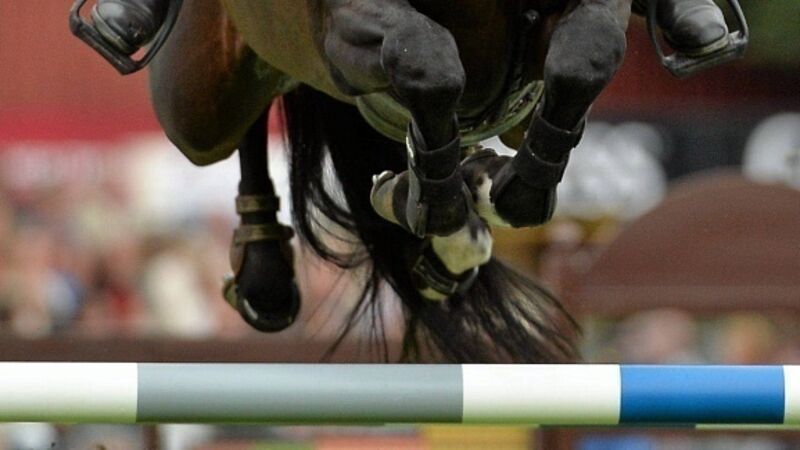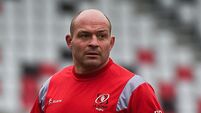HSI pulling out all the stops in Aachen case

As has been well documented, a member of the ground crew impeded O’Connor and Good Luck at the European Championships in Aachen, Germany, with the Meath rider knocking the next fence, costing Ireland a place in the Olympics.
A protest to the ground jury failed, with the appeals committee then upholding the finding of the ground jury. Horse Sport Ireland subsequently said every option, up to the Court of Arbitration for Sport (CAS), would be considered in seeking justice and it is to meet its lawyers on Wednesday.
The failure of the protest in Aachen, however, did not surprise Irishman Capt Roche.
“In my 28 years with the FEI, I cannot recall ever receiving a report that the ground jury has removed faults in any similar incident,” said Capt Roche in a written response.
When it was pointed out to Capt Roche in a phonecall that, at the World Cup final in 1993, American Susie Hutchinson was forced to stop at a fence blocked by two stewards, but did not accrue penalties, he said: “If somebody is obstructing your way, you have right to stop, put up your hand and alert the ground jury. The ground jury will stop the clock and they will restart the clock when a rider is ready to continue. It’s at the rider’s discretion if he wants to stop.
“The ground jury would have been of the opinion that everything was OK with Cian, once he kept going.”
Capt Roche agreed that, in the heat of the moment, a rider has to make split-second decisions and he felt that if O’Connor had opted to stop his round, he would not have accrued faults.
“If he put up his hand, the ground jury would have had to deal with it in an appropriate way. I cannot say 100% how it would be judged.
“In my opinion, it is highly unlikely he would have been penalised if he had put up his hand... The chances of that happening were very, very slim.”
It is instructive to look at rule 233.3, which speaks in the conditional, in that it deals with what should happen if a rider stops his round.
“If the Athlete stops voluntarily to signal to the Ground Jury that the obstacle to be jumped is wrongly built or if due to unforeseen circumstances beyond the control of the Athlete, he is prevented from continuing his round under normal circumstances, the clock must be stopped immediately.”
It is worth noting that the subsequent rule 233.3.1 states:
“If the dimensions are correct and the obstacle in question has been properly built or if the alleged unforeseen circumstances are not accepted as such by the Ground Jury, the Athlete will be penalised as for stopping during the round and the time of his round will be increased by six seconds.”
So, should O’Connor have stopped and risked being penalised?
Consider the circumstances. He was cruising to a clear in the second round of the nations cup with Good Luck. As he turned to the last line of fences, a steward ran in front of him, then leapt into a flowerbed in a bid to get out of the way. It was farcical, and obvious to all that O’Connor was distracted, knocking the next fence to leave Ireland just 0.38 penalties behind Spain, who earned the last of three Olympic places on offer.
It is fair to say that, stop or continue, he was onto a loser, each carrying the potential of penalty. That shouldn’t be the case. It was a situation not of his own making and, if there is even the slightest doubt the interference caused the horse to knock the fence, the faults should be dropped in the interest of natural justice.
For the record, no other rider knocked the same fence.
Last night, a HSI spokesman said that a legal dossier was being compiled by leading sports solicitor Gary Rice of DAC Beachcroft and that a specialist CAS Counsel, David Casserly, had also been retained.
“We have received a huge amount of support from all over the world,” he said. “Once we consider the dossier, we will make a decision next week about what is the best route of appeal.”
Four of the squad for next month’s European Championships line out at this weekend’s inaugural Millstreet/Drishane Castle International Horse Trials. Michael Ryan has two mounts in the three-star class (Dunlough Striker and Tomgar Rembrandt), as does Aoife Clark (Wasting Light and Fernhill Adventure) and Sam Watson (Imperial Sky and Horseware Bushman). Camilla Speirs competes in the classes for horses aged six and seven.
The event has attracted a large overseas contingent, highlighted by the fact the majority of the 51 entries in the three-star are foreign raiders. And they come in strength: New Zealand legend Blyth Tait, a four-time Olympic medal winner, has four entries. Other big names include Australian Kevin McNab, Kiwis Lucy Jackson and Tim Price, and Briton Nick Gauntlet.
The event has attracted approximately 220 entries, which the organisers have described as “very positive for our inaugural event”.
Much of the action will take place over two brand new courses, for the two-star and three-star, each with new fences. Dressage and show jumping take place today and tomorrow, with cross-country on Sunday.














